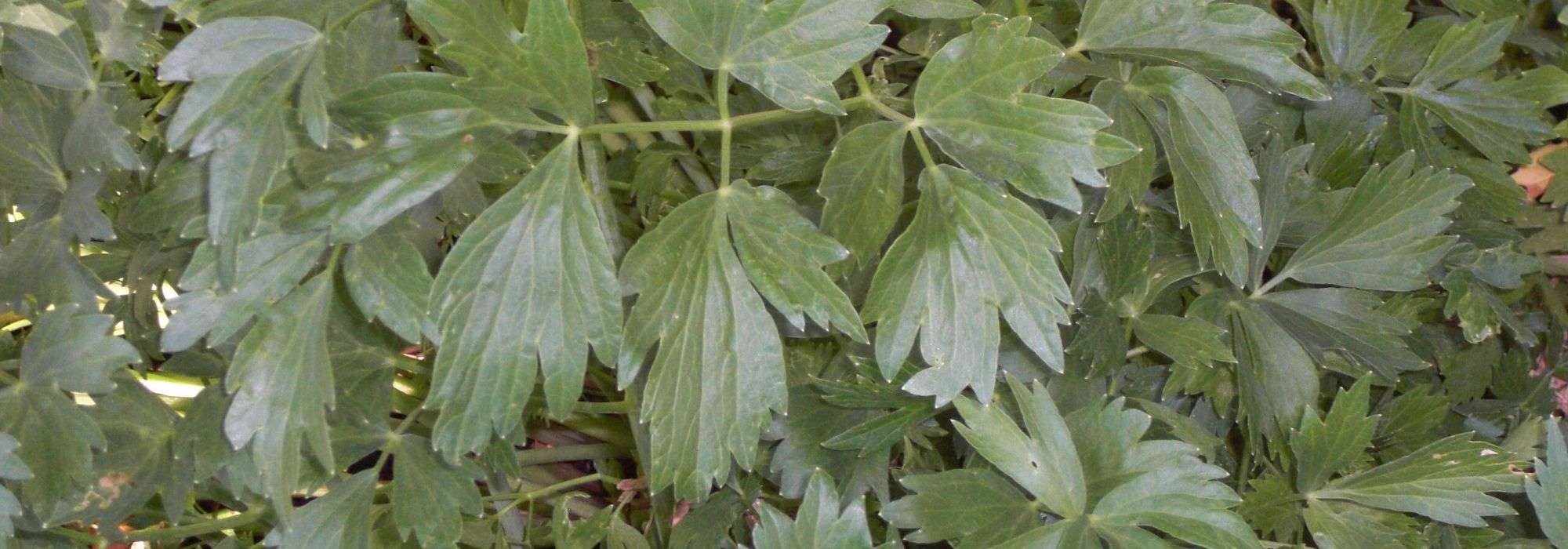
Loveliness, Mountain Celery: sowing, planting, growing
Contents
Lovage in a nutshell
- Lovage is a culinary and medicinal plant with strongly aromatic foliage
- It is used in cooking for its pronounced flavour of wild celery
- It is THE imposing perpetual celery, very decorative, exceeding 2 metres in height when in flower
- In summer, it displays lovely yellow flower umbels
- As decorative as it is useful, it is essential in the vegetable garden or in borders of herbs as well as in ornamental gardens
A word from our expert
The Lovage, (leuştean in Romanian) also known as “Mountain celery or perpetual celery,” is a beautiful aromatic plant valued in cooking for its foliage with a pronounced wild celery aroma. From its close relative, the celeriac found in our vegetable gardens, it has inherited a pungent flavour reminiscent of the famous liquid seasoning “Maggi,” hence its popular nickname “Maggi herb” or “Maggy plant.” It also possesses medicinal properties, particularly diuretic, sedative, and digestive, used in aromatherapy and herbal medicine, in essential oil, powder, etc.
Widely used as an aromatic herb in Eastern European countries, it deserves a place in our gardens where it can be grown for its aromatic as well as highly decorative qualities when planted alone.
In summer, it produces a lovely sunny flowering in umbels of yellow flowers, followed by small aromatic fruits that will also flavour vegetables, bread, or marinades.
It is a hardy plant, easy to grow, provided it is planted in full sun or partial shade in cool, rich, well-drained soil.
Discover what you need to know to successfully grow this aromatic plant with multiple qualities!
Description and Botany
“`html
Botanical data
- Latin name Levisticum officinale
- Family Apiaceae
- Common name Lovage, Mountain celery, Perpetual celery
- Flowering June to August
- Height 0.60 to 2 m
- Exposure Sun, partial shade
- Soil type rich and light, cool
- Hardiness -15°C
Lovage (Levisticum officinale), also known as Mountain celery or Perpetual celery, is a large herbaceous perennial aromatic, culinary, and medicinal plant from the Apiaceae family (Umbelliferae), like carrot, fennel, and many other aromatic plants like parsley, etc. It is part of the so-called “perpetual” vegetables.
It is also nicknamed Maggi tree or “Maggi herb” because its leaves have a flavour similar to that of Maggi stock cubes created in 1887. It can be found wild in the Alps, the Pyrenees, Central and Southern Europe, extending to Iran. Only the type species, Levisticum officinale, is cultivated; it should not be confused with Apium graveolens, the celeriac or turnip celery from our vegetable gardens, which is a biennial species.
On a long, fleshy taproot, Lovage forms rounded clumps that can reach 2 metres in height. Thick, upright basal rosettes give rise to thick, cylindrical, hollow, and channelled stems. Rather slow to establish, it will take at least three years to reach its full size.
The highly branched stems bear deciduous foliage that disappears in winter and reappears in spring. The slightly yellowish green, glossy leaves are borne on long petioles that are slightly grooved and divided into large dentate leaflets. They are broad and measure 40 to 70 cm long. Aromatic, they resemble celery, its cousin, in shape, smell, and taste.
In the second year, lovage produces flower spikes in summer. Large leafy stems are topped with rounded yellow umbels. The small flowers are grouped in 12 to 20 umbellules, which are themselves gathered into umbels 15 cm in diameter. At the end of the season, they transform into small aromatic, oval fruits, measuring 5 to 7 mm. Initially bright green, these edible seeds turn brown at maturity. They can be harvested and dried to flavour dishes.

Lovage: leaves, flowers, and seeds
The entire plant exudes a celery scent.
Hardy, it is cultivated as an aromatic and culinary plant in all our gardens. It is essential in the vegetable garden or herb garden alongside its aromatic cousins.
“`
Read also
Create a spiralled herb garden.Main species and varieties
Our lovage in pots
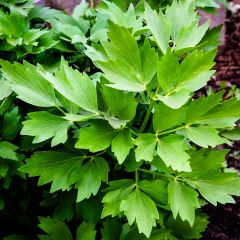
Levisticum officinale
- Flowering time August, September
- Height at maturity 1,50 m
Our lovage seeds
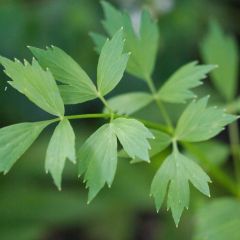
Lovage - Levisticum officinalis - Ferme de Sainte Marthe seeds
- Flowering time July, August
- Height at maturity 2 m
Lovage - Levisticum officinalis
- Flowering time July, August
- Height at maturity 2 m
Discover other Lovage
View all →Available in 1 sizes
Available in 1 sizes
Available in 2 sizes
Available in 1 sizes
Sowing and planting of lovage
Where to Plant It?
A montane plant, Levisticum officinale is hardy down to -15°C. It is easy to grow and readily self-seeds wherever it pleases. Plant it in full sun or partial shade, in slightly calcareous soil that remains cool in very sunny conditions, rich in humus, and well-drained.
Lovage will prefer a partially shaded spot in our warmest regions. Provide it with a sheltered location away from strong winds that could break its hollow stems. Before planting, keep in mind that it will remain in place for many years! Give it enough space from neighbouring plants as its height may cast shade on them. Pot cultivation is not recommended as its strong roots require rich, deep soil.
It is essential in the vegetable garden, particularly in herb borders where it attracts pollinating insects. With its ample vigorous foliage and beautiful yellow flower umbels, it also fits well in natural gardens, at the back of herbaceous borders and in lush mixed borders, adding height and lightness. Its imposing, decorative silhouette also makes it stunning as a standalone plant.
When to Sow and Plant Lovage?
Sowing typically occurs in a nursery or pot in August. Planting takes place in spring from March to April, for a harvest from January to October. Direct sowing in situ is possible from March to June. Our young plants in pots of Lovage or Mountain Celery can be installed in spring or autumn, once the risk of frost has passed.
How to Sow Lovage Seeds?
Sowing Under Shelter
- Sow directly in pots indoors or in a heated shelter at a temperature of 16 to 21°C
- Sow 1 to 2 seeds of perpetual celery in potting soil
- Keep moist during germination, which usually takes between 10 and 21 days
- Thin out to retain only the strongest plants
- When they reach the four-leaf stage, transplant if necessary into small pots, one plant per pot
- Keep the plants protected from frost (indoors, conservatory, cold greenhouse, under cloches)
- Transplant to the garden the following spring when they reach 15 to 20 cm in height
- Maintain a distance of 40 to 60 cm between each plant
Our Advice: Sow in tall pots or “root trainer” types that will allow the long root of lovage to develop properly. Follow our tips for successful herb sowing!
Direct Sowing in Place
Prepare the soil well to a good depth and enrich it with compost, lightening it with river sand for drainage if necessary.
- Sow in clusters of 4-5 seeds every 40-50 cm in rows spaced 60 cm apart
- Cover the seeds with potting soil and then firm down with the back of a rake
- Water gently and keep moist for about twenty days until germination
- Thin out to keep only one plant every 50 cm or so
By Planting
1 to 3 plants per m² of Lovage is ample for family consumption. They should be planted in warmed and well-prepared soil.
- Dig a hole three times the volume of the root ball
- Add compost to the bottom of the hole
- Position the root ball in the centre without burying the collar
- Backfill
- Water
- Mulch
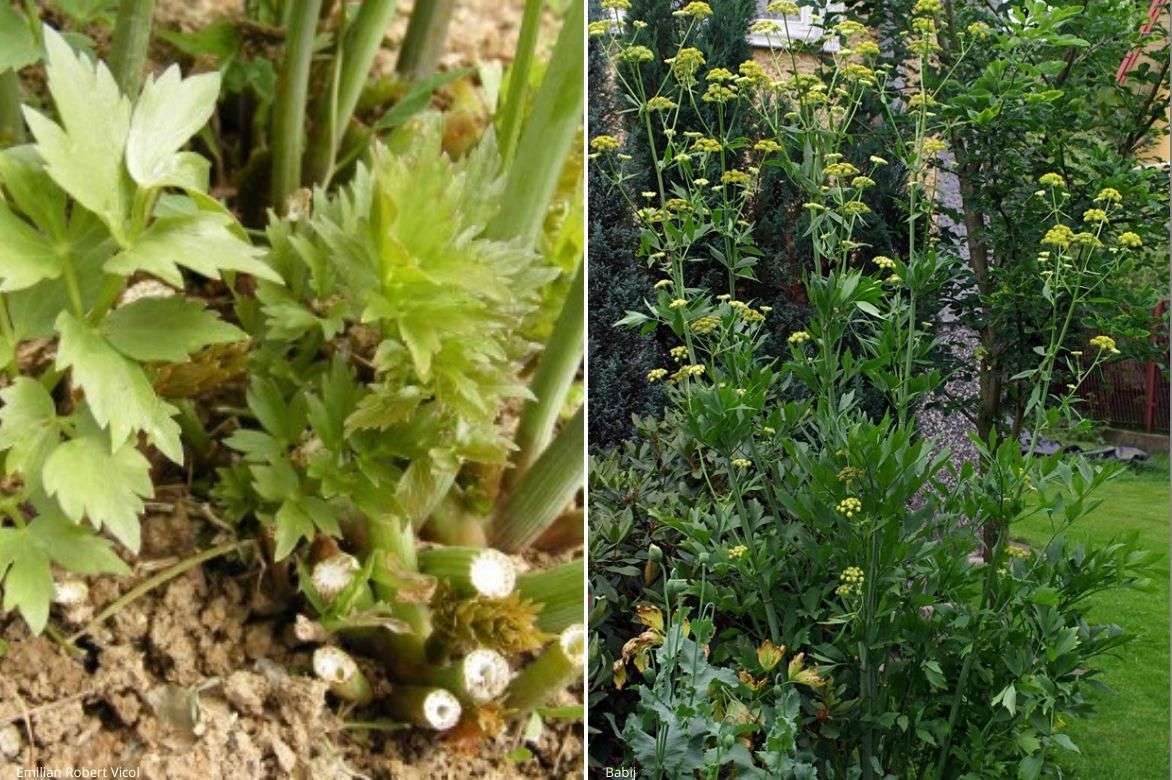
Maintenance of lovage
Lovage is a very low-maintenance aromatic plant. It enjoys soil that remains moist, especially when placed in sunlight: provide it with regular watering if the weather is dry. Monitor watering during the weeks following planting. Mulch the base in spring to keep the soil cool and reduce the need for watering.
Remove flower spikes to encourage leaf development. Regularly cut back the umbels if you wish to prevent it from self-seeding, or allow it to flower to collect some seeds for your future sowing. In autumn, as soon as the foliage has yellowed, cut the clump back just above the soil. Add some compost.
Every three years, divide the clumps to ensure their longevity.
The plant is resistant to diseases. It also has repellent qualities: its scent deters many pests. Additionally, it stimulates the growth of certain neighbouring plants. It is possible that snails and slugs may attack the first leaves; fortunately, we provide our secrets for combating their damage.
Harvest, storage, use of lovage
When to Harvest Leaves, Stems, and Seeds
The leaves and stems of Lovage can be harvested as needed from January to October, throughout the growing season. However, they will be most tender just before flowering. You can blanch the plants to obtain less pronounced-tasting petioles and more flavourful leaves: surround the plant with straw or a kraft paper bag up to two-thirds of its height.
The seeds are harvested after flowering, in autumn when they are fully ripe and turning brown. Shake the stems over a sheet of newspaper to collect them and dry them in a sunny, dry place.
The starch-rich roots are harvested from plants that have been established for at least three years.
Storage
The leaves of Lovage can be stored for a few days in the refrigerator or placed in a glass of water. They can be dried or even frozen: after air-drying in the shade, store them in airtight containers. The stems will keep for a few days wrapped in cling film in the refrigerator or in a slightly damp “absorbent paper.” The seeds can be stored for three years in glass jars or paper bags.
Uses and Benefits
Whether fresh or dried, the leaves of lovage are widely used in cooking to flavour soups, sauces, meats, stuffing, salads, and stews. Less commonly used here, it is an integral part of the cuisine in Eastern European countries, particularly Romania and Bulgaria, where it flavours lamb dishes. Due to its strong flavour, it should be used sparingly. The leaves are also used for hot or cold infusions. Its spicy seeds are used as a food condiment to enhance vegetables, bread, and marinades. Fresh stems can be added to tomato or vegetable juices. They can also be candied in sugar syrup and enjoyed like angelica.
The roots can flavour vegetable broth and can replace pepper.
The seeds, leaves, and roots of lovage possess medicinal properties that are digestive, diuretic, stomachic, depurative, antiseptic, and stimulating for the intestines and kidneys, and even sedative. It is a plant used in phytotherapy. It is rich in vitamin C. In the Middle Ages, monks used it to treat boils and renal colic.
Multiplication
The multiplication of lovage is done by sowing (see above) with seeds that you have harvested, or you can choose from our seeds. It is also easy to multiply by division in spring. This operation is carried out on mature clumps that are at least 3 years old.
- Dig up the clump using a spade
- Divide it into several sections containing a few buds and roots
- Replant immediately in the garden, after preparing the soil
Associate Mountain Celery with the garden
In companion planting, lovage pairs well with blackcurrants or peppers. In the herb garden, plant it alongside other aromatic plants such as common sage, sage, mint, angelica, or dill. Placed at the edge of the vegetable garden, it is particularly interesting as it may enhance the flavour of certain vegetables.
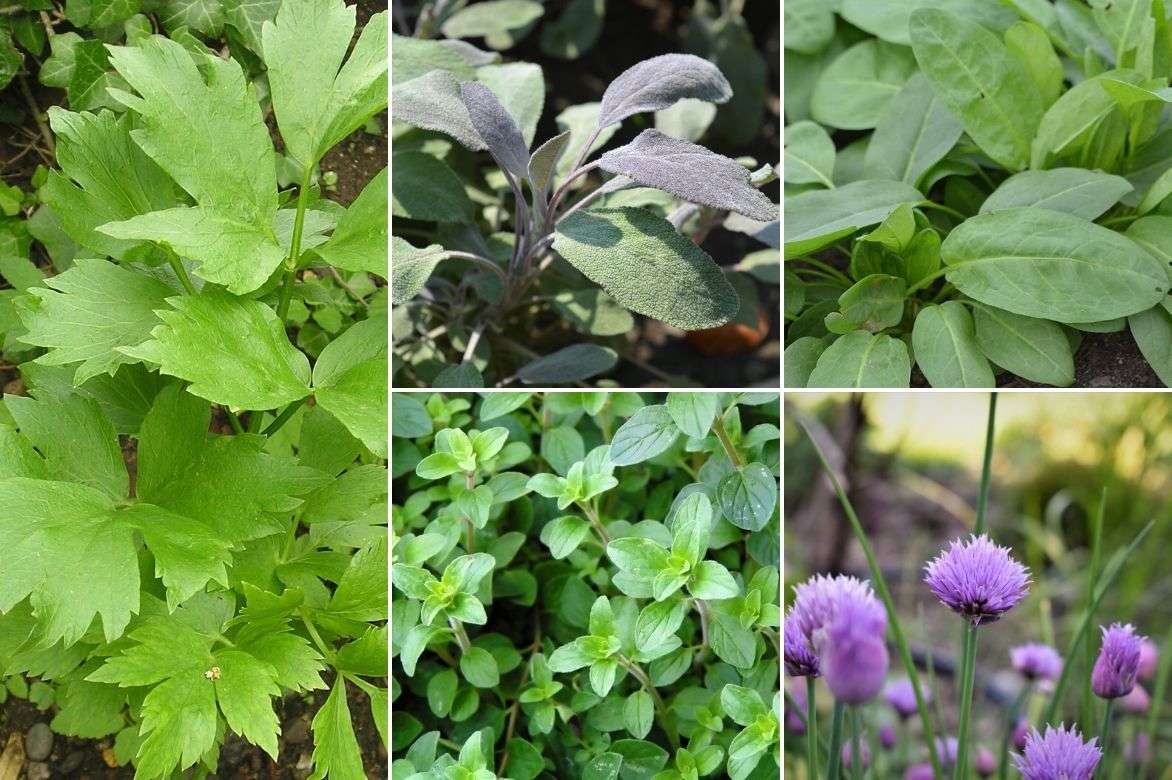
An example of association with other aromatic plants: lovage, common sage, sorrel-spinach, oregano (marjoram), and chives
In the ornamental garden, in a natural border, it can, why not, be planted at the back of the border, associated with summer perennials with strong growth such as angelica or lady’s mantle. In a yellow-toned border, it will be alongside yarrow, dyeing chamomiles, or Helenium.
For more inspiration, check out our guide “Aromatic Plants: 5 Great Ways to Integrate Them into the Garden”!
Useful resources
- Get inspired with our sheet “Aromatic Plants: 5 Great Ways to Integrate Them into Your Garden”!
- Discover the finest collection of aromatic seeds to season your seasonal dishes and infusions!
- Find a wealth of practical advice in our ‘vegetable garden’ files: “Sowing Aromatic Plants“, “Crop Rotation“, “Raised Vegetable Garden“, or “Permaculture and Vegetable Garden“
- Explore our online shop for our range of seeds and young plants of celery
- Subscribe!
- Contents
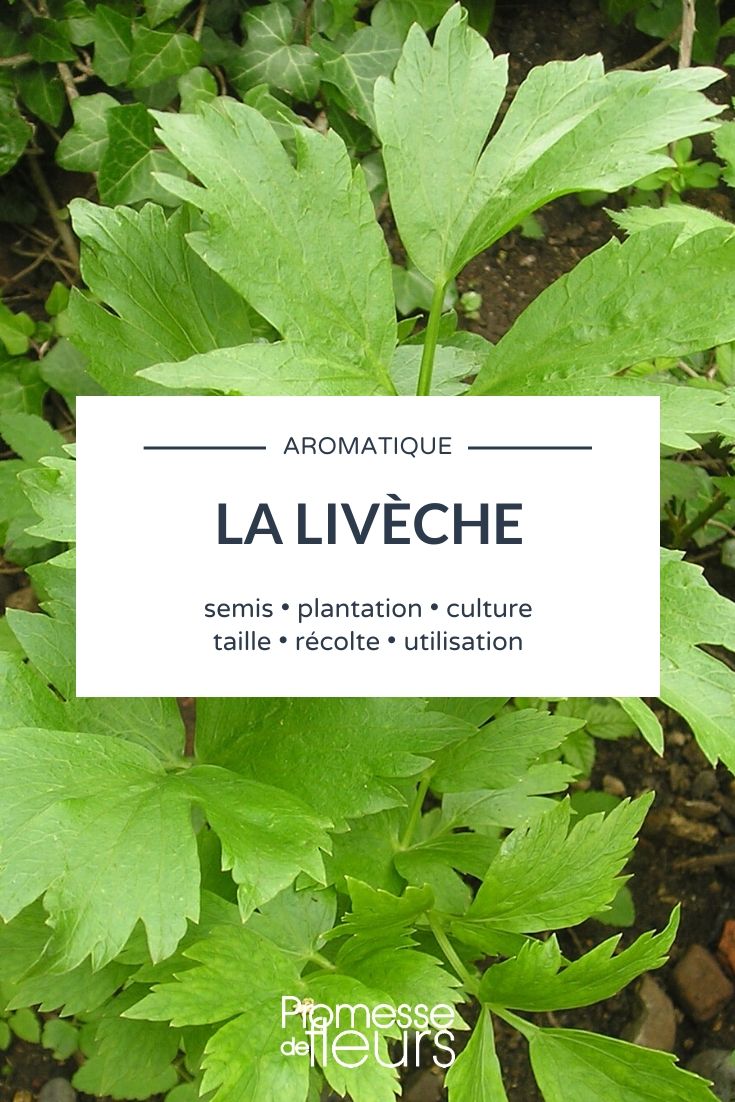


































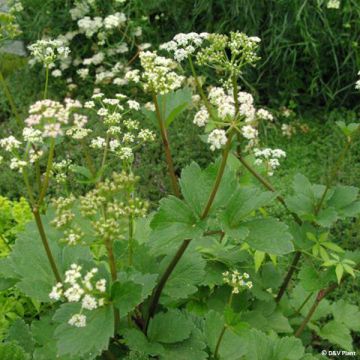
Comments